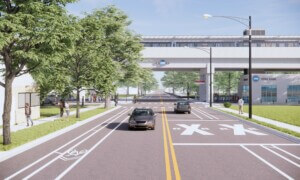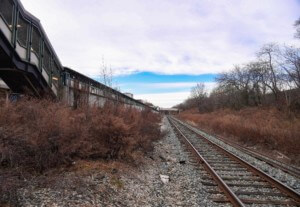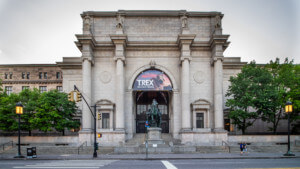Los Angeles Metropolitan Transportation Authority’s (Metro) proposed ballot initiative, Measure M, was unanimously approved yesterday by the Los Angeles County Board of Supervisors, clearing a final hurdle that allows the sale tax-raising initiative to officially be placed on the November ballot. Measure M, officially, the “Los Angeles County Traffic Improvement Plan,” seeks to permanently raise the sales tax for the county by a half percent, bringing L.A. County’s base sales tax rate to 9.5% while pushing the tax rate above 10% in several of the municipalities within its boundaries.
The proposal expects to generate $860 million in funding per year, allowing the Metro to vastly expand its 25-year-old transit system by adding multiple transit lines while also expanding existing subway, light rail, bus rapid transit, and commuter rail systems across the region. The proposed transit expansion would aim to weave the transportation system’s fledgling footprint throughout the region by adding light rail lines to the San Fernando Valley, West Hollywood, and across South and East Los Angeles. The proposal also dedicates roughly one-sixth of projected revenue to highway infrastructure projects with a matching amount of funds turned over local municipalities for discretionary use.
A map created by multi-modal transportation planner and blogger at CalUrbanist Steve Boland, shown above, illustrates the range of projects to be built if Measure M were to be passed by voters. Boland’s map includes the currently-under construction California High Speed Rail route as well as several added “unrelated projects that are largely funded and likely to happen” to create a vision for what L.A.’s transit system might one day look like. Describing his vision for the map, Boland told The Architect’s Newspaper, “There’s a map and project descriptions on the Metro website, but there’s not much detail about the projects, and there’s no timeline. This is understandable, since a lot of the projects haven’t been well defined yet—so my map has to make a number of assumptions about alignment, mode, etc. But I think it is good for folks to be able to envision just what the future might look like. And I wanted to do it in a way that was simple and familiar, thus the German-style diagram.”
Measure M marks the second transit-related tax increase in eight years, following 2008’s Measure R, which was also a half-cent increase. Measure R, due to expire in 2039, would become permanent with Measure M’s passage, which would itself increase by another half percentage point that year to retain Measure’s share of funding. Though only eight years old, Measure R has yielded the opening of multiple transit lines, including extensions to the Gold and Expo Lines, this year, alone. Metro also became the first-in-the-nation transit agency to run its own bike share program last month when it rolled out the initial phase of what could be a 7,000 bicycle system.
The initiative would need to clear a two-thirds majority on election night to become law and is expected to be joined on the ballot by a slew of tax and bond initiatives aimed at easing many of the ills across the region, including a $1.2 billion bond initiative aimed at alleviating the region’s homelessness epidemic.










